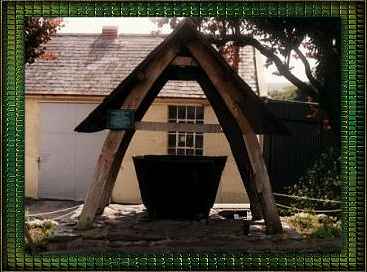|
|
|



Irish Poor Law Famine Pot Total workhouse accommodation catered for 100,480 but outside these houses there remained hundreds of thousands who qualified by virtue of their normal condition. Daniel O'Connell thundered against the Poor Law Act, declaring that it destroyed self- reliance, would paralyse industry and decrease the economy. But Ireland was desperate, and was almost the only European country without some national relief system. Therefore, the introduction of the Act did reflect an increasing social awareness. Built of rough stones - according to architect George Wilkinson's design, the immense buildings were soon a familiar sight made recognisable by gabled roofs, tall chimneys and mullioned windows. Fermoy Union escaped this architectural masterpiece as the Poor Law Commission overruled local opposition and converted a disused and neglected barracks for that use. Control over the union was rigidly exercised by a team of inspectors. The actual running of the place fell to an anually elected board of guardians. Conditions in a workhouse were calculated to be so severe and extreme that anyone prepared to accept them could only be destitute. Theat was the infamous "workhouse test." But it was separation, a family orientated people, detested most. Families were split up once they entered the Workhouse. The workhouse lay on Fermoy's northern slopes, in a long disused military barracks. Build in 1809, New Barracks had been acquired by the Poor Law Commissioners agaiist strong local opposition. It opened its doors in June 1841. It occupied all the western block and the western half of the northern block, formerly officers quarters. The rest of the buildings remained unoccupied for the 17 years' tenure of the workhouse. At 6a.m. the tolling of a bell sounded the need for different melancholy daily tasks. Meals were eaten in absolute silence. Fermoy's Workhouse differed significantly in two respects from others. First in its location and secondly it gained the reputation of being the best run house in Ireland, being described as a model of its time. |

© Paudie McGrath Cork Ireland 2003 -